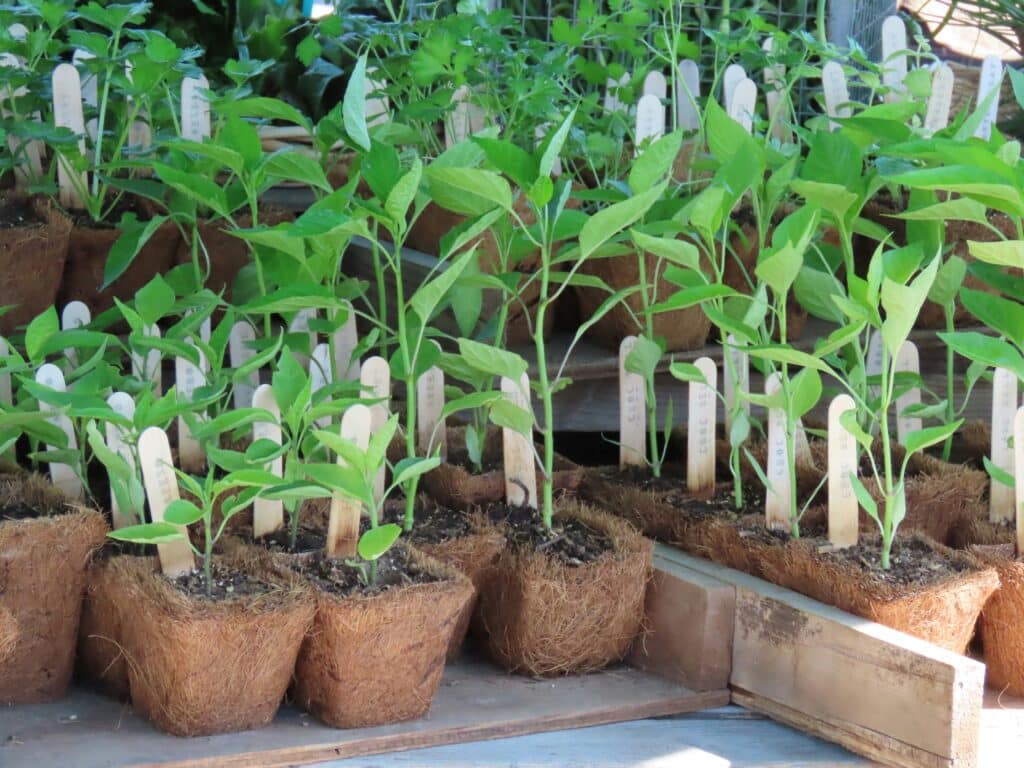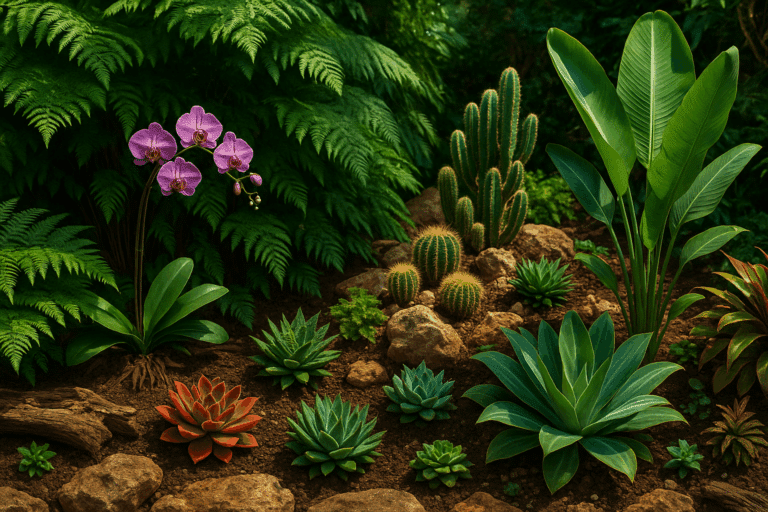As a verdant jewel in the crown of home remedies, Aloe Vera offers a plethora of benefits that extend beyond its aesthetically pleasing presence in your kitchen garden. The upcoming sections will delve deeper into the significance of Aloe Vera, providing a comprehensive guide to growing this medicinal marvel at home with absolute ease.
Aloe Vera, a succulent plant species, is a reservoir of healing attributes. From ancient Egypt to modern times, its medicinal properties have been celebrated globally. Intriguingly, the benefits of this plant are not limited to external applications; it also caters to internal health, thus, earning it an esteemed spot in the realm of natural remedies.

Through the course of this enlightening journey, the magic of Aloe Vera will be unraveled, explaining why this miracle plant deserves a spot in every household. With its soothing and healing prowess, Aloe Vera is a force to be reckoned with. Get ready to navigate the fascinating world of homegrown Aloe Vera, as we guide you through the easy steps to cultivate this plant and harness its medicinal prowess right from your kitchen garden.
From understanding its growth patterns to revealing its multiple health benefits, this write-up offers a deep dive into the world of Aloe Vera. So, stay tuned as we embark on this exciting journey towards a healthier life, empowered by the wonders of Aloe Vera. A green thumb is all you need to cultivate this plant at home and reap the benefits of your very own medicinal kitchen garden.
Internal Health Benefits of Aloe Vera
Beyond its renowned topical applications, Aloe Vera is increasingly recognized for its internal healing abilities. When consumed in safe quantities and prepared correctly, the gel extracted from Aloe Vera leaves offers numerous health benefits that support the body’s internal systems.
Aloe Vera juice, for example, is popular for its ability to soothe the digestive tract. It contains compounds like aloin and barbaloin that have mild laxative effects, which may aid in relieving constipation. However, it’s essential to consume only decolorized and purified forms of Aloe Vera juice to avoid adverse effects.
This remarkable plant also assists in balancing stomach acids and reducing symptoms of acid reflux and heartburn. Some herbal medicine practitioners recommend it for individuals with irritable bowel syndrome or inflammation of the gut lining. Additionally, Aloe Vera juice may aid in the detoxification of the liver, thanks to its hydrating and antioxidant-rich composition.
Aloe Vera’s Role in Immune Support
Aloe Vera contributes to a stronger immune system by supplying antioxidants such as vitamins C and E, which help neutralize harmful free radicals. These free radicals can cause oxidative stress, a factor known to contribute to chronic illnesses and premature aging.
Polysaccharides found in Aloe Vera have shown potential in supporting immune activity by enhancing macrophage function, which helps the body identify and destroy pathogens. This immune-regulating function adds another layer of value to Aloe Vera as a daily health supplement.
Moreover, Aloe Vera contains trace enzymes that may assist in reducing inflammation. This feature is particularly beneficial for people dealing with joint pain, autoimmune responses, or skin disorders aggravated by systemic inflammation.
Daily Uses of Aloe Vera Around the Home
The simplicity of Aloe Vera allows it to be seamlessly integrated into everyday life. Whether as a fresh gel from a homegrown plant or a commercial extract, its versatility spans multiple household uses. One popular use is as an after-sun gel. When applied to the skin, it delivers instant relief from sunburns by cooling the area and encouraging skin regeneration.
Aloe Vera gel can also be used as a makeup primer or hydrating mask. When blended with a few drops of rose water and kept chilled, it becomes a refreshing morning toner that can tighten pores and reduce puffiness. For those dealing with acne or rosacea, its anti-inflammatory and antimicrobial properties help calm flare-ups and reduce redness.
Creating Natural Remedies with Aloe Vera
Making your own Aloe Vera products at home is both cost-effective and empowering. For a soothing hair mask, you can combine Aloe Vera gel with coconut oil and honey to restore shine and combat dryness. As a night serum, Aloe mixed with a small amount of vitamin E oil can hydrate the skin and support cellular repair.
A popular home remedy also includes combining Aloe gel with turmeric powder to create a skin-brightening paste. This mask, when applied regularly, may help reduce hyperpigmentation and improve overall skin texture.
In terms of oral health, Aloe Vera-based mouth rinses are gaining popularity as natural alternatives to chemical-laden products. Their antibacterial properties help maintain healthy gums and freshen breath.
Aloe Vera as a Natural Preservative
Few people realize that Aloe Vera gel can also function as a mild preservative. Its antibacterial and antifungal properties can be harnessed to extend the shelf life of homemade beauty products or food items. When blended into fruit-based cosmetics or health drinks, Aloe Vera acts as a stabilizer while also boosting nutritional value.
This application is especially useful in natural skincare, where preservatives are often excluded. Aloe Vera adds both functional and health-enhancing qualities to these formulations.
Companion Planting and Aloe Vera
Interestingly, Aloe Vera also plays a role in gardening beyond its medicinal value. It is a great companion plant for other succulents and houseplants due to its pest-repellent properties. When grown near plants that are prone to fungal infections or mealybugs, Aloe Vera can help keep the growing environment cleaner and more balanced.
Moreover, the gel from Aloe Vera can be used as a rooting hormone when propagating cuttings from other plants. Its growth-stimulating enzymes help new roots form more efficiently, making it a useful tool for home gardeners interested in propagation.
Aloe Vera for Pets and Natural Homecare
Aloe Vera’s soothing effects are not limited to humans. Some pet owners use diluted Aloe Vera gel to treat minor cuts, burns, and dry skin in dogs or cats. However, it must be noted that ingestion of raw Aloe Vera latex can be toxic to pets, so topical use should be carefully monitored.
Within the household, Aloe Vera-infused sprays can be used as a natural air freshener or surface cleaner. When combined with essential oils and distilled water, Aloe-based cleaners offer an eco-friendly solution for daily cleaning routines. They are particularly beneficial in homes where sensitive skin or respiratory concerns make synthetic cleaners problematic.
Seasonal Care and Aloe Vera Plant Management
While Aloe Vera is hardy, it does require seasonal adjustments in care. During winter, Aloe plants need significantly less water due to reduced evaporation and growth rates. It’s recommended to water only when the soil is completely dry to avoid root rot.
In spring and summer, Aloe Vera may produce small yellow or orange tubular flowers when grown outdoors or in bright conditions. While the flowering stage is rare indoors, it’s a pleasant surprise when it occurs. Repotting every couple of years during the growing season is ideal for refreshing soil and encouraging robust growth.
To maximize Aloe Vera’s health, rotate the pot occasionally for even sunlight exposure and wipe the leaves clean to allow photosynthesis to occur efficiently. Use scissors or garden shears to trim any browning or unhealthy leaves, allowing the plant to focus energy on new growth.
Common Mistakes to Avoid with Aloe Vera
New Aloe owners sometimes overcomplicate their care routines. Overwatering is the number one mistake and often leads to mushy stems or fungal growth. Aloe Vera thrives on neglect compared to many tropical plants. Using non-succulent potting soil or keeping the plant in dark corners will also hinder growth and health.
Avoid using tap water regularly, especially in areas with hard water, as the mineral build-up can stunt the plant’s development. Rainwater or distilled water is ideal.
Ensure proper airflow around the plant to avoid mold, especially if it’s in a humid kitchen or bathroom space. For those using Aloe Vera for internal purposes, always verify the plant species and use only food-safe gel prepared correctly to avoid gastrointestinal discomfort.
Growing Aloe Vera in Your Kitchen Garden

Growing Aloe Vera at home is a straightforward process that requires minimal effort. The plant thrives in a warm and dry environment and doesn’t require frequent watering, making it a great addition to your kitchen garden.
Choosing the Right Pot and Soil
When planting Aloe Vera, the first step is choosing the right pot and soil. A pot with good drainage is critical to prevent water from accumulating, as Aloe Vera is susceptible to root rot. Similarly, well-draining soil, such as a cactus or succulent mix, is essential.
Watering and Sunlight Needs
Although Aloe Vera is a desert plant, it still needs water to grow. However, it’s important to water the plant sparingly and allow the soil to dry out between watering sessions. Regarding sunlight, Aloe Vera thrives in bright, indirect light. Too much direct sunlight can cause the leaves to turn brown and dry out.
Harvesting and Using Aloe Vera
Once your Aloe Vera plant has matured, you can start to harvest it for its medicinal uses. This typically occurs when the plant is around 8-12 months old and the leaves are thick and fleshy.
How to Harvest Aloe Vera
To harvest, simply cut one of the outer leaves close to the base of the plant. Be sure to use a sharp knife to make a clean cut and prevent damage to the plant. Once cut, the leaf can be stored in the refrigerator for up to a week.
Extracting Aloe Vera Gel
Extracting the gel is a simple process. Start by cutting off the prickly edges and the top layer of the leaf’s skin. You’ll then see the clear gel. Scoop this out with a spoon, and it’s ready to use.
Topical and Internal Use of Aloe Vera
There are many ways to use Aloe Vera, both topically and internally. Topically, you can apply the gel directly to the skin to treat burns, cuts, and other skin ailments.
Creating Aloe Vera Products
You can also create homemade Aloe Vera products. For example, Aloe Vera gel can be used as a base for homemade lotions, creams, and ointments. You can also mix the gel with essential oils to create a soothing massage oil.
Internal Uses
Internally, Aloe Vera can be consumed in the form of juice or capsules to aid digestion and boost the immune system. However, it’s important to note that not all parts of the Aloe Vera plant are safe to consume. The outer leaf has a layer called latex, which can cause digestive issues if consumed in large amounts.
Maintaining Your Aloe Vera Plant
Aloe Vera is a relatively low-maintenance plant, but there are a few things to keep in mind to ensure its longevity. First, be aware of overwatering, as this is the most common cause of Aloe Vera plant death. The plant also prefers a temperature between 55 and 80 degrees Fahrenheit, so avoid placing it in extreme temperatures.
Common Pests and Diseases
Aloe Vera plants can occasionally be affected by pests like aphids and diseases like root rot. To prevent these issues, ensure your plant is getting the right amount of water and light, and regularly check for signs of pests and disease.
Pruning and Repotting
Pruning your Aloe Vera plant can help to keep it healthy and promote growth. This involves removing any dead or damaged leaves. Additionally, you may need to repot your Aloe Vera plant every few years as it grows. When repotting, ensure to use fresh soil and a larger pot to give the plant plenty of room to grow.
Growing Aloe Vera at home can be an enjoyable and rewarding experience. With its myriad of medicinal uses and easy-to-care nature, it’s an excellent plant to add to any medicinal kitchen garden.
Conclusion
In conclusion, the healing power of Aloe Vera is not only a powerful natural remedy but also an easy-to-grow plant that you can cultivate in your own kitchen garden. Aloe Vera’s beneficial properties, including anti-inflammatory, antibacterial, antioxidant, and moisturizing qualities, make it a must-have medicinal plant for every home.
Growing Aloe Vera at home has been made easy and achievable through the practical tips highlighted in the article. From understanding its growth conditions, to planting, caring and harvesting the plant, anyone can now have constant access to this remarkable medicinal resource right in their kitchen garden.
Transitioning into a more natural, self-sufficient lifestyle is a journey worth embarking on, and growing your own Aloe Vera is a significant first step. Not only will you have the assurance of the quality of your plant, but you can also save on costs and have the plant available whenever needed.
Therefore, embrace the power of Aloe Vera and take the first step towards creating your medicinal kitchen garden today. Experience the multitude of health benefits that come from this amazing plant, and foster a healthier, more natural lifestyle. This is the beauty and power of Aloe Vera, a true gift of nature.
Remember, the journey to wellness begins with a single step. Let that step be the cultivation of your own Aloe Vera plant.



